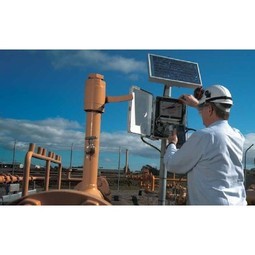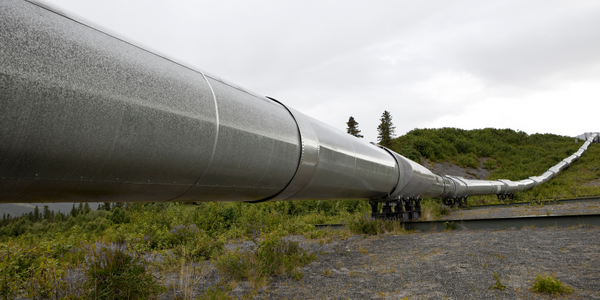Customer Company Size
Large Corporate
Region
- America
Country
- Canada
- United States
Product
- nGeniusONE® service assurance platform
- nGenius® for Flows
- InfiniStream® appliances
- Flow Collectors
- nGenius 3900 and 1500 Series Packet Flow Switches
Tech Stack
- Hybrid Cloud
- Cloud Migration
- Service Assurance
Implementation Scale
- Enterprise-wide Deployment
Impact Metrics
- Cost Savings
- Customer Satisfaction
- Productivity Improvements
Technology Category
- Infrastructure as a Service (IaaS) - Cloud Computing
- Infrastructure as a Service (IaaS) - Hybrid Cloud
Applicable Industries
- Oil & Gas
- Utilities
Applicable Functions
- Business Operation
- Maintenance
Services
- Cloud Planning, Design & Implementation Services
- System Integration
About The Customer
This International Pipeline and Power Company provides transport and supply of natural gas and oil throughout North America, as well as develops renewable energy generation resources. The business is responsible for thousands of miles of pipeline and a growing electricity generation and transmission division, both requiring adherence to strict safety and compliance guidelines. With over 15,000 employees, this company provides natural gas and electricity to more than 3.5M retail customers in addition to numerous wholesale customers generating over $26 Billion in annual revenue.
The Challenge
The company’s health and safety management system is critical for not only protecting employees and the environment, but also for maintaining regulatory compliance. This system monitors air, water, and waste management, as well as loss prevention, document management and integration. Much of this relies on “always-on” digital services. This puts IT under significant pressure to be more proactive in ensuring quality and availability of critical services to avoid stiff regulatory fines/penalties which can range into the billions of dollars, and reputational damage with the public. To streamline IT services, the company decided to migrate vital systems to a hybrid cloud environment. It was critical that performance after the move be equal to or better than the existing on premise applications and that they have the ability to address issues quickly. IT needed a way to maintain visibility and assure services before, during and after migration to this new hybrid cloud environment. To achieve this, they needed end-to-end troubleshooting capabilities across the hybrid cloud in order to prove exactly where problems originated, ending time-wasting finger-pointing, and enabling collaboration with third-party vendors to resolve issues quickly.
The Solution
In order to achieve service assurance, this International Pipeline and Power Company implemented the nGeniusONE Service Assurance platform, powered by Adaptive Service Intelligence™ (ASI), along with ISNG appliances and nGenius Packet Flow Switches. The solution quickly identified, isolated and mitigated service issues proactively, rather than reactively as had been done in the past. In addition, the IT team utilized NetFlow for additional performance monitoring capabilities. The solution validated application performance during cloud testing prior to migrating the production system to the cloud allowing them to execute the migration with confidence. It provided proactive end-to-end monitoring of the hybrid cloud applications post migration, across the data center and into the cloud, to ensure ongoing service assurance. It also provided evidence used to collaborate with cloud vendors to pinpoint problems, thus the cloud vendors quickly implemented fixes where previously the vendors would assume the problem wasn’t there’s if no other customers were experiencing the same problem.
Operational Impact

Case Study missing?
Start adding your own!
Register with your work email and create a new case study profile for your business.
Related Case Studies.

Case Study
Taking Oil and Gas Exploration to the Next Level
DownUnder GeoSolutions (DUG) wanted to increase computing performance by 5 to 10 times to improve seismic processing. The solution must build on current architecture software investments without sacrificing existing software and scale computing without scaling IT infrastructure costs.

Case Study
IoT Solutions for Smart City | Internet of Things Case Study
There were several challenges faced: It is challenging to build an appliance that can withstand a wide range of voltage fluctuations from as low at 90v to as high as 320v. Since the device would be installed in remote locations, its resilience was of paramount importance. The device would have to deal with poor network coverage and have the ability to store and re-transmit data if networks were not available, which is often the case in rural India. The device could store up to 30 days of data.

Case Study
Automation of the Oguz-Gabala-Baku water pipeline, Azerbaijan
The Oguz-Gabala-Baku water pipeline project dates back to plans from the 1970’s. Baku’s growth was historically driven by the booming oil industry and required the import of drinking water from outside of the city. Before the construction of the pipeline, some 60 percent of the city’s households received water for only a few hours daily. After completion of the project, 75 percent of the two million Baku residents are now served around the clock with potable water, based on World Health Organization (WHO) standards. The 262-kilometer pipeline requires no pumping station, but uses the altitude differences between the Caucasian mountains and the capital to supply 432,000 m³/d to the Ceyranbatan water reservoir. To the people of Baku, the pipeline is “the most important project not only in 2010, but of the last 20 years.”

Case Study
GPRS Mobile Network for Smart Metering
Around the world, the electricity supply industry is turning to ‘smart’ meters to lower costs, reduce emissions and improve the management of customer supplies. Smart meters collect detailed consumption information and using this feedback consumers can better understand their energy usage which in turn enables them to modify their consumption to save money and help to cut carbon emissions. A smart meter can be defined in many ways, but generally includes an element of two-way communication between the household meter and the utility provider to efficiently collect detailed energy usage data. Some implementations include consumer feedback beyond the energy bill to include online web data, SMS text messages or an information display in consumers’ premises. Providing a cost-effective, reliable communications mechanism is one of the most challenging aspects of a smart meter implementation. In New Zealand, the utilities have embraced smart metering and designed cost effective ways for it to be implemented. The New Zealand government has encouraged such a move to smart metering by ensuring the energy legislation is consistent with the delivery of benefits to the consumer while allowing innovation in this area. On the ground, AMS is a leader in the deployment of smart metering and associated services. Several of New Zealand’s energy retailers were looking for smart metering services for their residential and small business customers which will eventually account for over 500,000 meters when the multi-year national deployment program is concluded. To respond to these requirements, AMS needed to put together a solution that included data communications between each meter and the central data collection point and the solution proposed by Vodafone satisfied that requirement.

Case Study
Remote Wellhead Monitoring
Each wellhead was equipped with various sensors and meters that needed to be monitored and controlled from a central HMI, often miles away from the assets in the field. Redundant solar and wind generators were installed at each wellhead to support the electrical needs of the pumpstations, temperature meters, cameras, and cellular modules. In addition to asset management and remote control capabilities, data logging for remote surveillance and alarm notifications was a key demand from the customer. Terra Ferma’s solution needed to be power efficient, reliable, and capable of supporting high-bandwidth data-feeds. They needed a multi-link cellular connection to a central server that sustained reliable and redundant monitoring and control of flow meters, temperature sensors, power supply, and event-logging; including video and image files. This open-standard network needed to interface with the existing SCADA and proprietary network management software.








